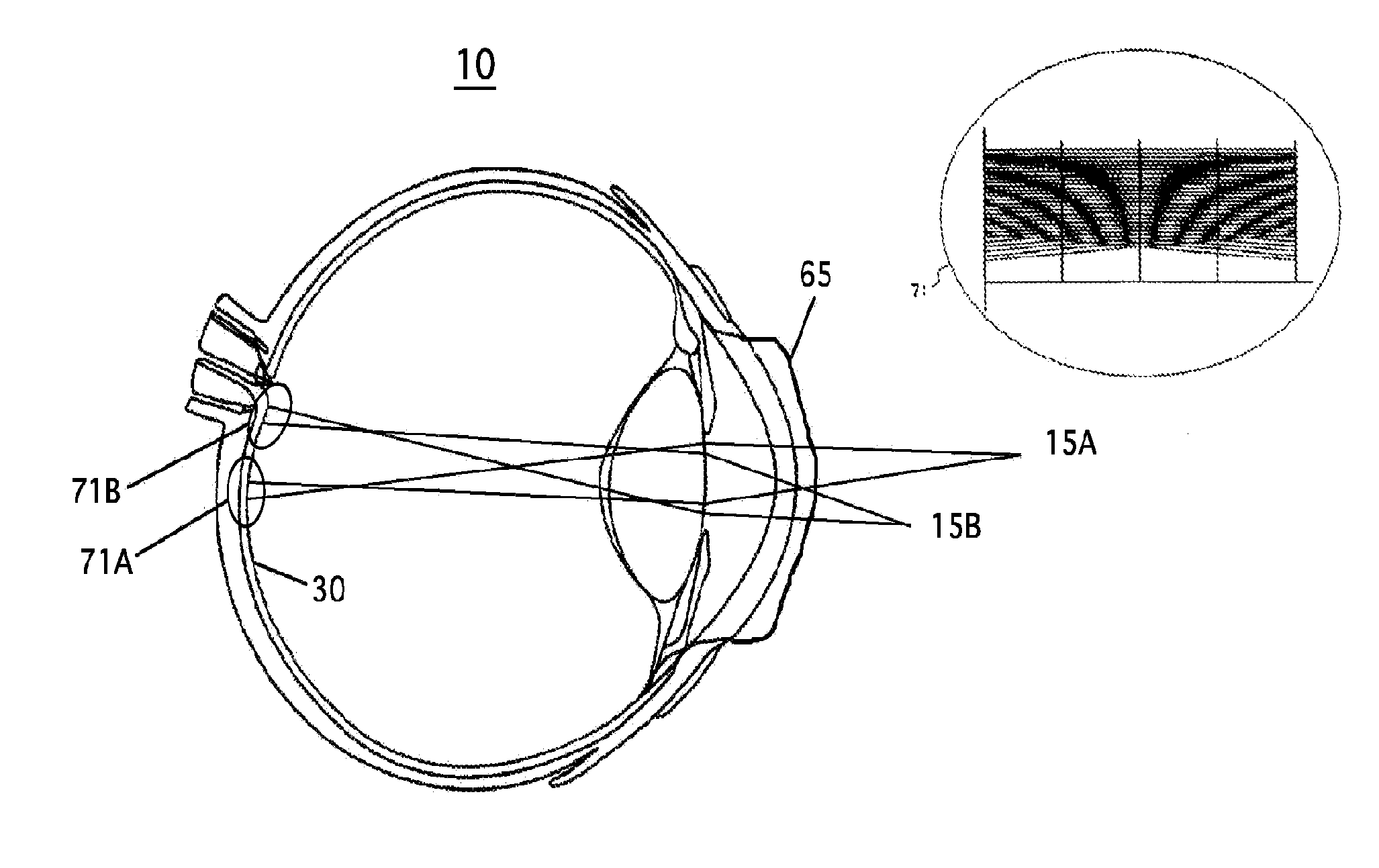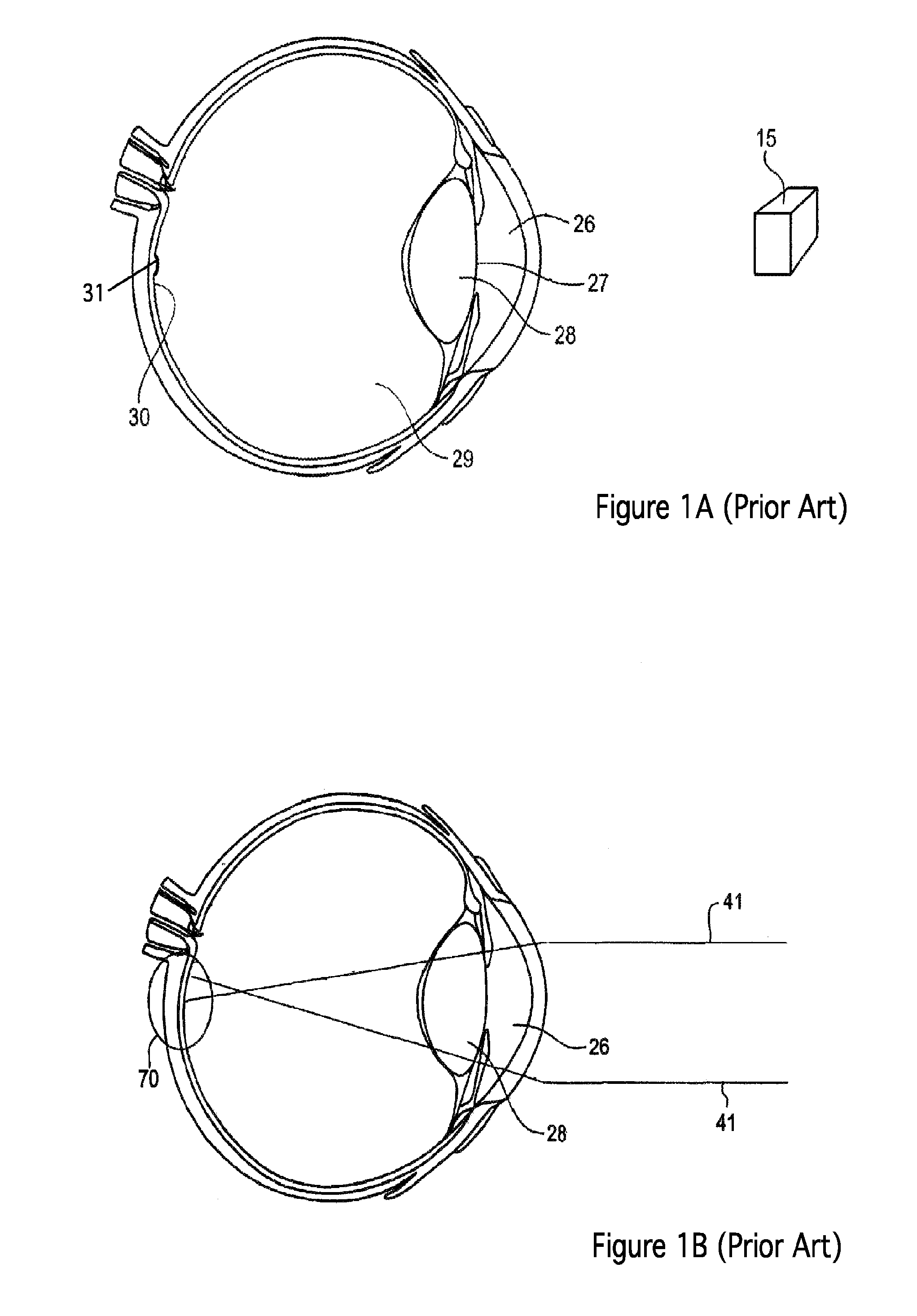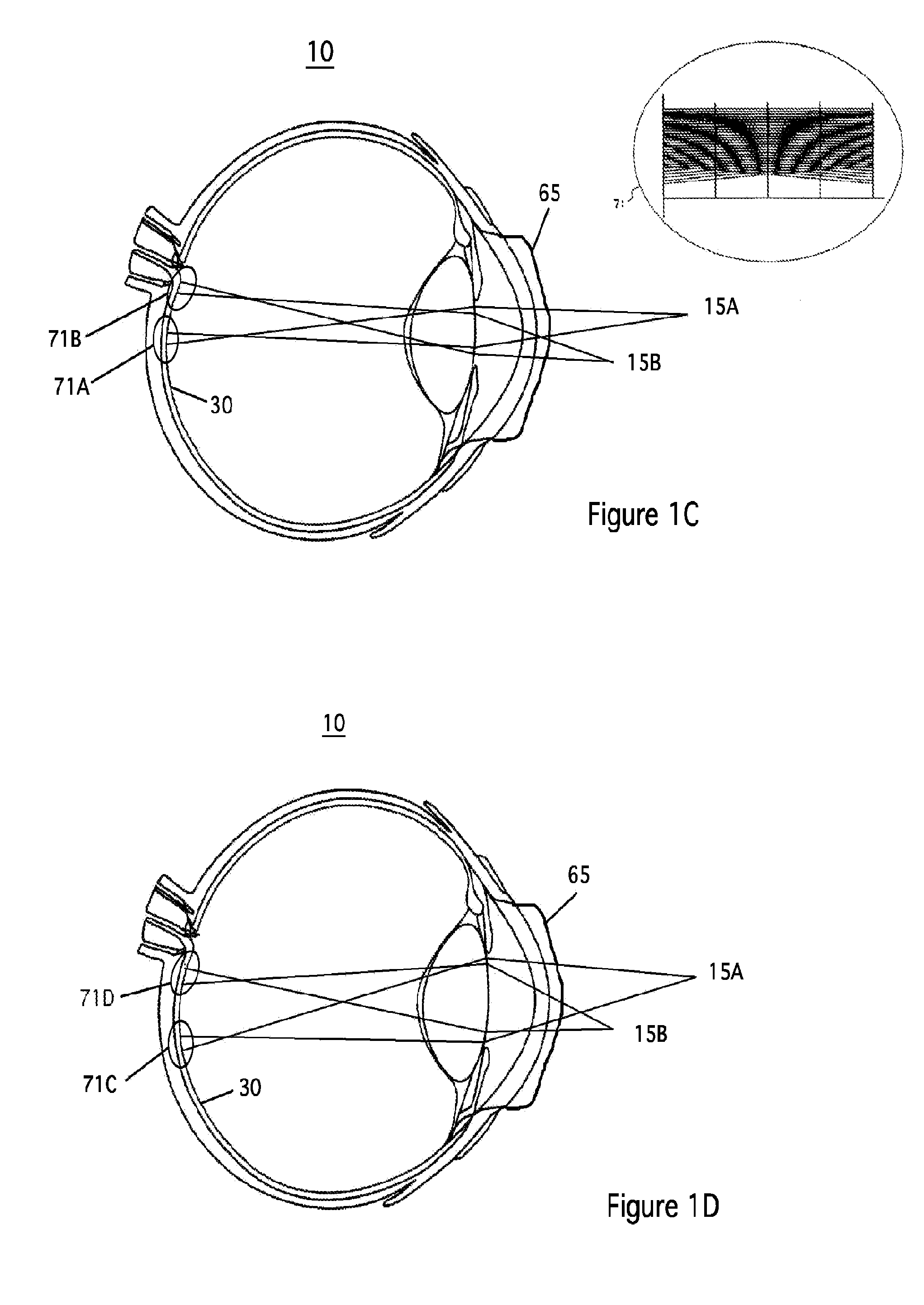Extended Depth Field Optics With Variable Pupil Diameter
- Summary
- Abstract
- Description
- Claims
- Application Information
AI Technical Summary
Benefits of technology
Problems solved by technology
Method used
Image
Examples
first embodiment
[0035]FIG. 2 is an isometric view of an extended depth of field (EDOF) contact lens 65 according to the present invention. The profile of lens 65 comprises concentric, circularly symmetric rings of varying depth. The structure of the lens is chosen such that the optical transfer function remains relatively constant over a range of pupil diameters, as well as object distances. The circularly symmetric structure is advantageous in that a user does not have to worry about contact lenses rotating. It also simplifies manufacturing.
second embodiment
[0036]FIG. 3 is a plot showing the profile of an EDOF optic according to the present invention. The x-axis has been normalized. In general, a contact lens will have a diameter on the order of 6 mm.
[0037]FIG. 4 is a plot showing a modulation transfer function of a normal human eye focusing on an object one meter away. The human eye focuses by changing the shape of its lens 28 (see FIG. 1, Prior Art). The x-axis of the plot of FIG. 4 is the focus shift away from the ideal focus of lens 28. The focus shift of the eye in order to focus at infinity is shown (1 diopter, or approximately 0.38 mm) and the focus shift to focus at 0.5 mm is also shown (1 diopter, or approximately −0.36 mm). Objects can't be further away than infinity, but the eye can shift focus past the equivalent focus shift, so the plot extends further than where “object at infinity” is indicated. Note that the MTF is far from uniform, and includes zeroes, albeit outside the relevant focus shift range. The peak of the MTF ...
PUM
 Login to View More
Login to View More Abstract
Description
Claims
Application Information
 Login to View More
Login to View More - R&D
- Intellectual Property
- Life Sciences
- Materials
- Tech Scout
- Unparalleled Data Quality
- Higher Quality Content
- 60% Fewer Hallucinations
Browse by: Latest US Patents, China's latest patents, Technical Efficacy Thesaurus, Application Domain, Technology Topic, Popular Technical Reports.
© 2025 PatSnap. All rights reserved.Legal|Privacy policy|Modern Slavery Act Transparency Statement|Sitemap|About US| Contact US: help@patsnap.com



